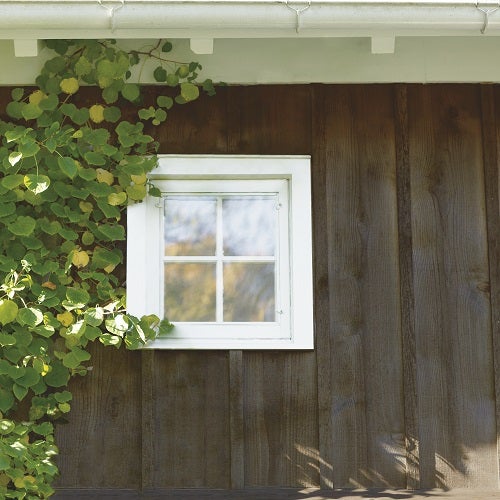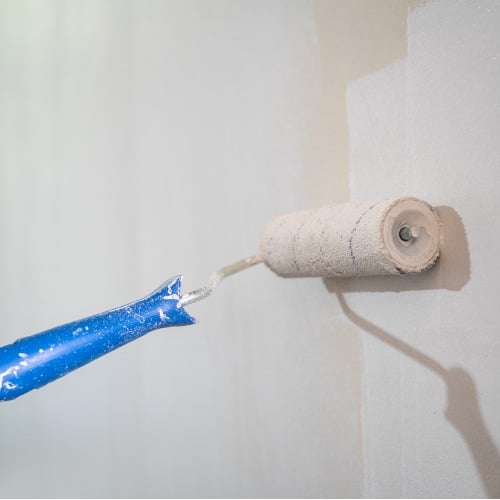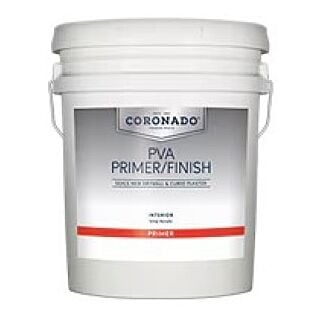Primers
Best Sellers
 Zinsser Allprime Low VOC Oil-Based Primer Sealer & Stain Blocker Int/Ext, Gallon SKU: AP344655$61.49each
Zinsser Allprime Low VOC Oil-Based Primer Sealer & Stain Blocker Int/Ext, Gallon SKU: AP344655$61.49each Benjamin Moore Fresh Start Deck & Siding Oil-Based Exterior Wood Primer (C094), Gallon SKU: C0940001$68.39each
Benjamin Moore Fresh Start Deck & Siding Oil-Based Exterior Wood Primer (C094), Gallon SKU: C0940001$68.39each
The Perfect Primers For Any Paint Job!
To ensure your paint job looks good and lasts for years to come, you’ll probably need a primer.
You may have seen the "Paint and Primer" all-in-ones that seem to offer a more convenient solution. However, these are only suitable for certain projects like painting new drywall, patching surfaces, or painting over similar colors.
We’ll quickly explain what a paint primer is, what it does, and how to choose the best one for your project.
What does a paint primer do?
Paint primers help the paint stick better and ensure an even finish. They also seal the material you are painting over. This means you'll need less paint and it prevents moisture, mold stains, and other blemishes from bleeding through.
Should I use primer before painting?
You might be wondering when you need to apply primer and if you need to at all. Generally, you will if you encounter any of the following:
A Porous Surface
Highly porous surfaces usually require primers. Bare wood always needs some and so does new drywall and skim-coated drywall.
A Stained Surface
If your surface has stains, spots, or other blemishes, it's best to apply a few coats of primer first. You can use a stain-blocking oil-based primer like Zinsser Allprime Low VOC Oil-based Primer sealer & Stain blocker for the best results.
A Glossy Previous Paint Finish
Glossy and shiny surfaces usually require adhesion primers because it's hard for the new paint coat to stick. To improve adhesion, professional painters sand down these types of finishes before applying a paint primer. Benjamin Moore’s Stix Bonding Primer is a great choice for hard-to-stick surfaces.
A Dark To Light Color Change
Primers can save you money and time when covering up darker colors. You don’t need to use as many coats of expensive lighter paint.
How To Choose The Best Paint Primer
Here are some quick tips to get the best finish no matter what you're painting.
Drywall: Avoid oil-based primers for drywall as they often result in an uneven finish. Try a Latex-based one instead.
New wood: For cedar, redwood, or stained wood, use a stain-blocker primer like Zinsser's Allprime. For wood with heavy tannin and/or wood knots a shellac-based primer like Zinsser Allprime Shellac-based Primer is recommended. If the wood is unstained, without knots opt for a latex or an oil-based primer.
Painted wood: If the paint is not chipped or flaking, you may not need primered paint as most Benjamin Moore premium paints are self-priming. In all other cases, a multi-purpose primer is recommended.
Metal surfaces: If the metal has rusted, use a metal primer like Rustoleum. If no rust is present, choose a rust-inhibitor primer instead.
What Type of Primers Can I Buy At Ring's End?
At Ring's End, we have many different types of primer paint including stain-blocking primers, rust-inhibiting primers, multi-purpose primers, and much more.
Please contact us if you need any further advice!
Primer
Primer provides a smooth, uniform surface for painting. Indoors, it’s used to block stains and odors, to prepare new drywall and patched walls for painting, seal and smooth bare wood trim, to prevent mildew and flaking, and to make significant color changes easier and faster to execute. Exterior primers accomplish similar goals but are formulated to withstand harsher outdoor conditions. Self-priming paints, like Benjamin Moore's Aura and Regal Select lines provide a high-coverage, moisture-resistant, durable paint-and-primer in one.













